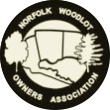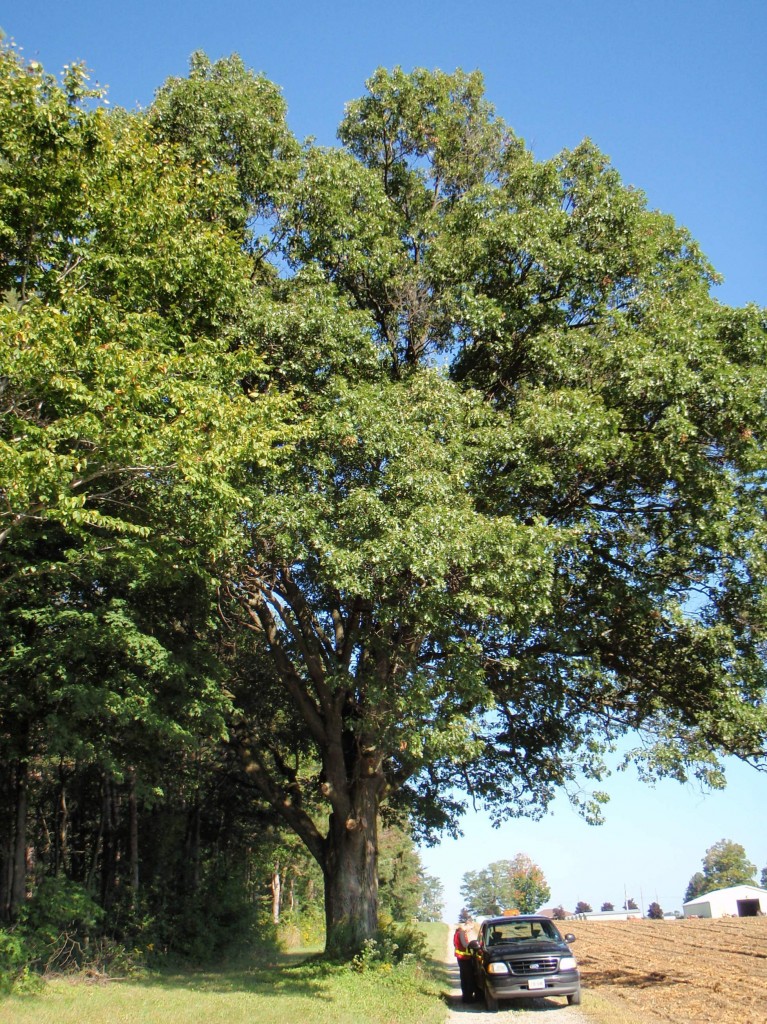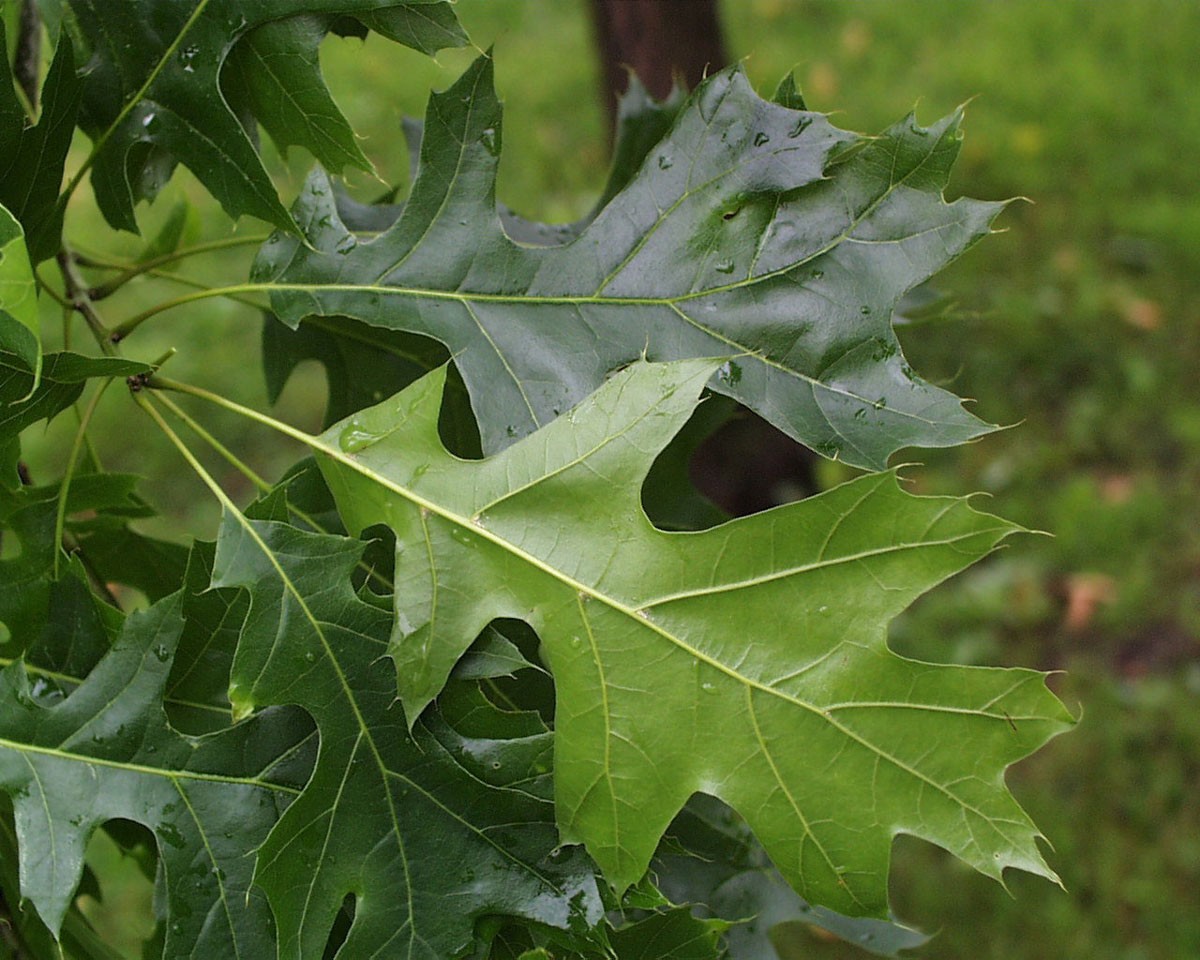Quercus velutina
Owner: Steve & Anita Buehner
Nominator: Steve & Anita Buehner
Height: 27.9 m (91.5 ft)
Diameter: 148.6 cm (58.5 in)
Circumference: 466.6 cm (183.7 in)
Description
Black Oak is a common, medium-sized oak that is widely distributed throughout the eastern and midwestern United States and in southern Ontario and New Brunswick. It is also known as yellow oak, quercitron, yellowbark oak, or smoothbark oak. It grows best on moist, well-drained soils and has a lifespan of about 200 years. Associated forest cover includes other oaks, poplar, white pine, red cedar, hemlock, beech and hard maple. In forest stands, black oak begins producing acorns at around 20 years of age with optimum production between 40 to 75 years. Acorns occur singly or in clusters of 2-5 and mature in 2 years. The acorns are a food source for many insects, birds, deer, turkey, squirrels and small rodents. The gypsy moth is the most damaging insect to black oak, and can cause mortality after several years of defoliation, particularly in drought conditions. The wood which is commerically valuable for hardwood flooring and furniture is sold as red oak.
Sander, Ivan L. (1990, December). Silvics of North America, Volume 2: Hardwoods. United States Department of Agriculture, Forest Service. Retrieved date (2010, December 14th) from http://www.na.fs.fed.us/spfo/pubs/silvics_manual/table_of_contents.htm
Black Oak leaf (Source: Iowa State University)


